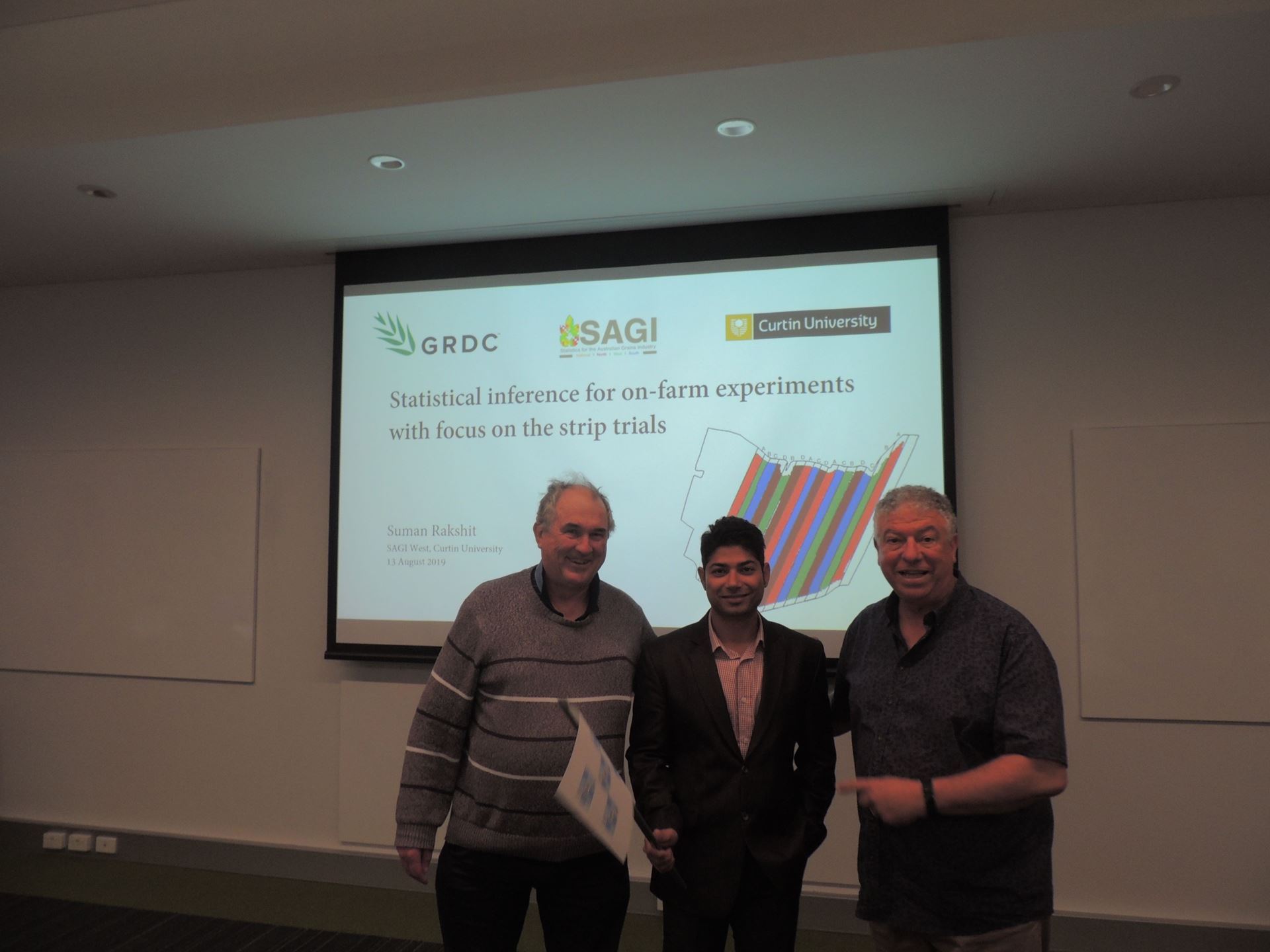The August meeting of the WA Branch has been held as a joint meeting of the Statistical Society of Australia, WA Branch and the International Biometric Society, Australasian Region since 2013. The occasion is used to invite a statistician whose work focuses on biometrics to deliver a presentation. The speaker this year was Dr Suman Rakshit from Statistics for the Australian Grains Industry (SAGI) West who works as a biometrician at Curtin University. Dr Rakshit has a background in research in spatial statistics and the analysis of point patterns. His current research primarily focuses on developing methods for the design and analysis of large-scale agricultural field trials.
Suman’s talk was titled ‘Statistical Inference for on-farm experiments with a focus on large strip trials’. He began by explaining the historical context of field trials in agricultural research, where the questions of interest traditionally involved testing differences in mean yields from applying qualitative or quantitative treatments, such as different cultivars or differing levels or timing of nitrogen application. Field trials of this kind were implemented on small plots on relatively uniform land, and the designs incorporated randomisation, replication and blocking. Much of the early theory of trial design and analysis was developed for this type of application.
 New technology has brought new opportunities for agricultural research. In particular, motivated growers can now conduct experiments cost-effectively in their own paddocks by utilising variable rate application technology to vary inputs, and real-time sensors fitted to harvesters to collect vast amounts of data. In these situations, the question of interest changes from a comparison of treatments to working out how to best manage inputs to maximise profit. Rather than trying to answer a question that can be extrapolated to other growers and other farms, inference is local: the questions being answered relate only to the actual paddock on which the trial is implemented. With no knowledge of trial design theory, trials are often implemented systematically and in ways that make life easier, such as in long-strip plots with lengths greater than 200 metres. Statistical methods developed for small plot trials are not appropriate in this context.
New technology has brought new opportunities for agricultural research. In particular, motivated growers can now conduct experiments cost-effectively in their own paddocks by utilising variable rate application technology to vary inputs, and real-time sensors fitted to harvesters to collect vast amounts of data. In these situations, the question of interest changes from a comparison of treatments to working out how to best manage inputs to maximise profit. Rather than trying to answer a question that can be extrapolated to other growers and other farms, inference is local: the questions being answered relate only to the actual paddock on which the trial is implemented. With no knowledge of trial design theory, trials are often implemented systematically and in ways that make life easier, such as in long-strip plots with lengths greater than 200 metres. Statistical methods developed for small plot trials are not appropriate in this context.
Suman discussed an adaptation of geographically weighted regression for use in grower-initiated on-farm experimentation in order to analyse geo-referenced yield monitor data to obtain spatially-varying estimates of treatment effects, and demonstrated his proposed approach on a publically available dataset of corn-field fertilizer trial from Argentina. He concluded his talk by presenting derived maps of spatially varying relationships which could be used to guide grower decisions in paddock management.
Following the talk, further discussions were held at a nearby restaurant. Special thanks to SSAI WA Branch and IBS-AR for the pre-dinner drinks and post-dinner dessert/coffee, respectively.
Dr Karyn Reeves
Karyn.Reeves@curtin.edu.au
